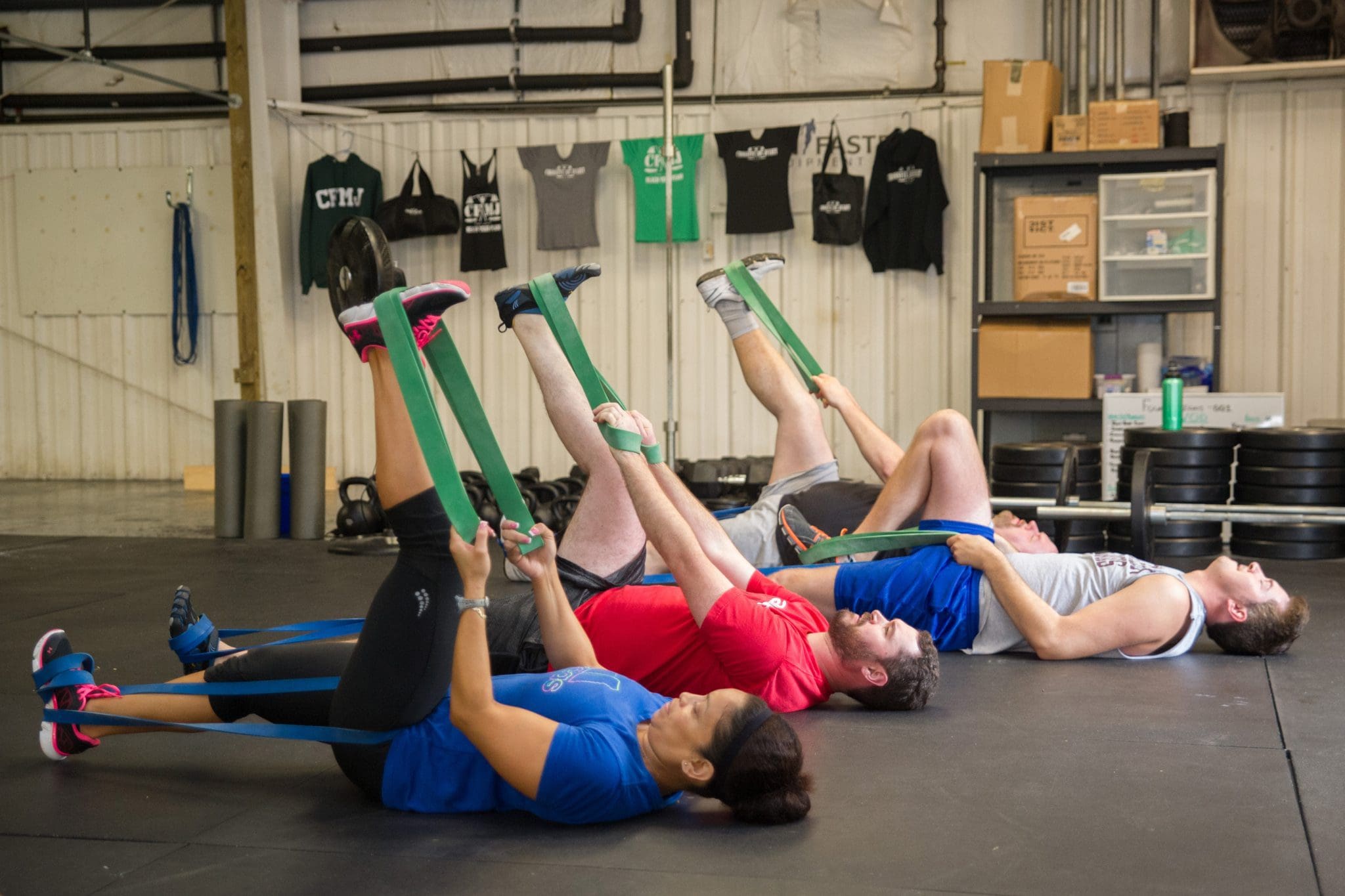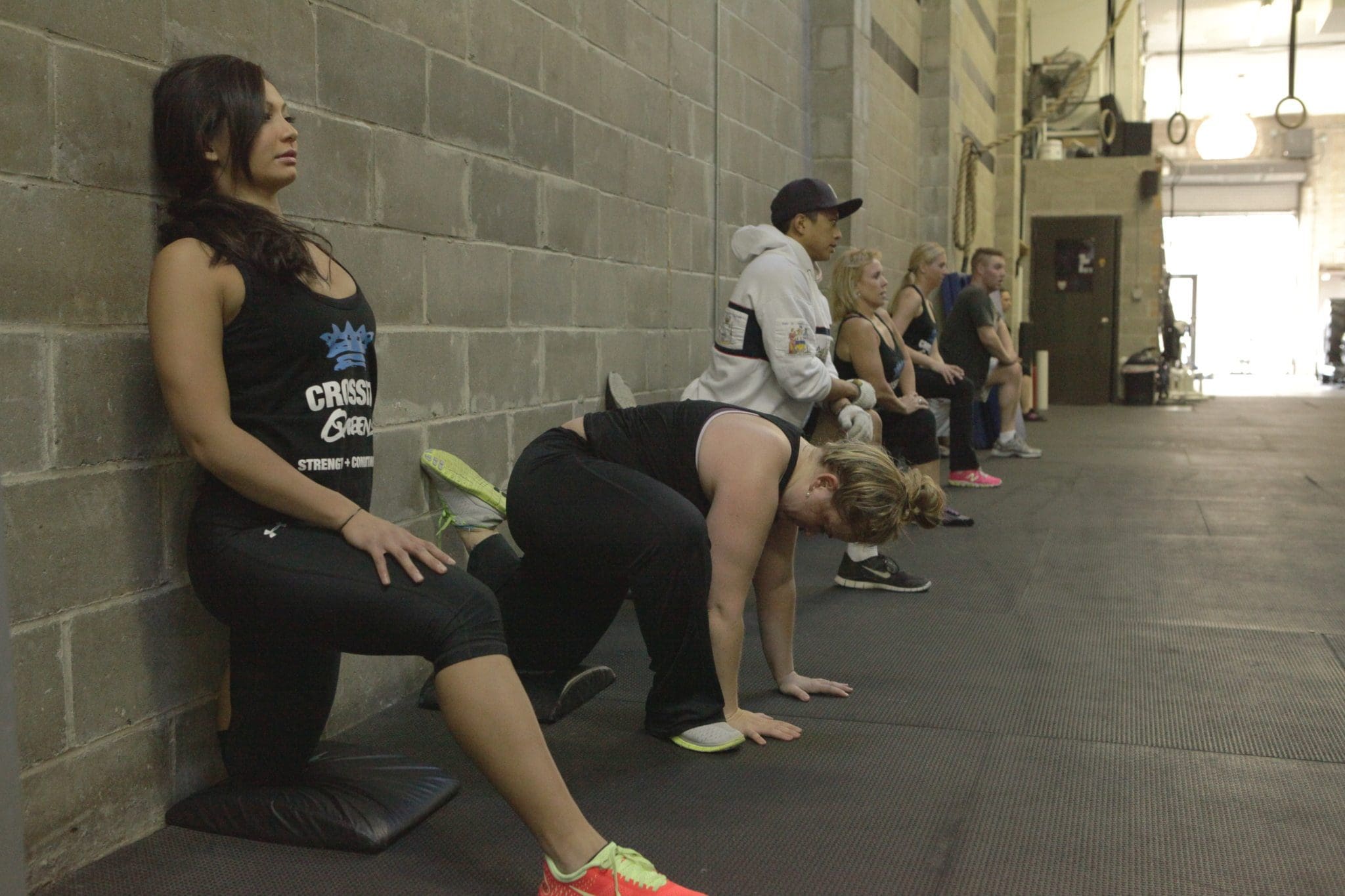Why do people automatically assume that endless amounts of static stretching and foam rolling will provide them with transferable benefits in the gym, sport and their daily lives? The stretching myths need to be dispelled, especially as it pertains to the most commonly stretched area of the body, the hip.
From attempting to get out of lower back pain to targeting more and more hip mobility to improve squatting and other functional movements, people gravitate towards stretching, but is it really doing them any good?
We have Dr. Zach Long here on DrJohnRusin.com because he wants to put a stop to static stretching of the hips, and rightfully so! He has a better way to improve positions and alleviate pain, and it doesn’t involve sticking lacrosse balls in your butt or holding painful static stretches for minutes at a time. Enjoy.
Here’s What You Need To Know…
1. Many people use foam rolling and static stretching to alleviate tight muscles, but the fact of the matter is that these practices make little to no useable change to the the muscles or movements they control in the short and long term.2. If you really want to improve your “hip mobility” you better look outside the hip and start targeting stability of the pelvis and spine instead of adding endless mobility to one of the most mobile joints in the body.
3. When it comes to alleviating lower back pain and hip dysfunction, gaining and maintaining pelvic alignment in the neutral zone is pivotal. And guess what, it will improve your strength performances as well.
4. Dynamic stability is the new mobility, so here’s the most effective program that will open up your hips without ever holding a static stretch ever again.
Stupid Static Stretching
The fitness world has come a long way in our understanding of the importance of mobility work and the impact it has on athletic performance and training. It’s safe to say that “mobility” exercises and tools like the foam roller are becoming commonplace in gyms, CrossFit boxes, and on the playing field worldwide.Unfortunately, most athletes performing these mobility drills have yet to figure out that much of their mobility work does not actually result in real performance gains!
Sadly, their mobility work does not address the true root of their problems and their constant stretching, foam rolling, and joint band distractions get them nowhere. The hips are the greatest example of this problem, with athletes everywhere wasting hours on useless mobility work! Let’s stop wasting time and start seeing objective results from corrective exercise and training, you know, the kind that shows up in PRs instead of in fluffy feel good effects.
It’s time to quit the static stretching of the hips and start refocusing your “mobility” work on more effective exercises and techniques that will not only improve your mobility, but your athletic performance as well! And did I mention that we can achieve this in a fraction of the time? Yeah, better listen up.
Where Hip Mobility Exercises Have Gone Wrong

Because of the inherent stability of the hip joint provided by the ball-and-socket, many athletes and coaches spend far too much time trying to improve hip mobility by performing stretching and soft tissue work. Months of intense stretching techniques provide little actual change in available motion and only serve to waste time and create pain in the athletes.
Instead, small stability changes at the pelvis can provide drastically fast improvements in performance. Contraction of the muscles around the pelvis can result in changes in pelvic positioning and thus available hip range of motion. For example, a posterior tilt of the pelvis will put the hips in a position advantageous to improve hip flexion mobility, while an anterior pelvic tilt will result in increased hip extension. It’s important to remember that it’s not all about the hips.
The hamstrings are the perfect example of the effects pelvic positioning can have on mobility. I’ve yet to meet an athlete who doesn’t claim to have “tight hamstrings”. Even the elite gymnasts, dancers, runners, and yogis believe that their hamstrings should be further stretched in order to maintain and enhance mobility.
In an anteriorly rotated pelvis, the hamstrings will have increased tension placed on them, thus resulting in a perceived decrease in flexibility. More often than not, simple core stabilization movements will provide immediate improvement in their perceived tightness or chronic hamstring muscle strains.
To test this directly, have athletes perform a straight leg raise while lying on their back. Quite often, simply cueing the athlete to “push your rib cage down” or “flatten your lower back into the floor” will result in a posterior pelvic tilt that instantly improves “hamstring mobility” and decreases the perception of hamstring tightness and muscle strain.
This simple repositioning of the pelvis can provide more gains almost instantly than months of static stretching, manual therapy, and self-myofascial work combined. This effect can also be seen when working to improve hip extension, rotation, and functional patterns such as the squat.
The Hip Mobility Solution
The self-sufficient solutions to hip mobility deficits are simple. Perform movements that challenge the available active hip range of motion, while engaging the core to stabilize the pelvis. As the athlete learns to better control the core and pelvis, mobility will drastically improve and be transferable into function.Hip “mobility” work done this way will have two effects.
First, it will reposition the pelvis to a more neutral position, allowing for improved mobility within the hip socket.
Secondly, it will serve as a “reset” to muscle tone around the hips. Often times, the body realizes it does not have the needed stability around a joint due to muscle weakness. The body’s response is to increase the tone in a muscle to provide some false-stabilization. The hip flexors (like the hamstrings) are another muscle group that often feels tight in athletes but when proper core stabilization movements are performed, this increased muscle tone instantly vanishes and mobility problems are gone!
Your New Hip Mobility Regimen
The following exercises should be a strong component of any athlete’s hip mobility work, as they will produce faster results than the typically prescribed foam rolling and stretching routines. Lets break these down one by one with a video and my notes on what makes each movement so powerful:The Reverse Active Straight Leg Raise
Coaching Notes: The Reverse Active Straight Leg Raise is an excellent movement to improve hip flexion and active hamstring mobility. The athlete begins lying on his or her back with both legs vertical and knees straight. One leg is kept in this vertical position (this can be done by using a stretch strap or not using one to increase the challenge) while the other leg is slowly lowered to the floor. The key point of performance is that the lower back remains flat on the ground, ensuring that the core is actively engaged to stabilize the spine and pelvis.
Single Leg Hip Lift
Coaching Notes: Up next for those with hip flexor tightness, the Single Leg Hip Lift and Psoas March variations can be incredible exercises. To perform the Single Leg Hip Lift, the athlete lies on their back with one foot flat on the floor and that knee bent to approximately 90 degrees. The other leg is pulled towards the chest and held in the athlete’s arms. Next, the athlete lifts his or her hips up as high as possible without arching their lumbar spine. The athlete should consciously focus on activating his or her glutes throughout the entire movement.
The Psoas March
Coaching Notes: The Psoas March is an amazing exercise for quickly eliminating hip flexor tightness as it retrains the psoas’ role in spinal stability. The athlete lies supine with a resistance band around both feet. While focusing on maintaining a neutral spine, the athlete lifts one knee towards his or her chest, stopping at ~90 degrees of hip flexion, and then returns to supine. This is then repeated on the opposite leg.
The Goblet Squat
The Goblet Squat may be the most powerful mobility exercise specific to the squat. By holding a weight in front of the body, the athlete is able to better sit back into the squat, maintain a neutral spine and pelvis, and reach better squat depths. When performing Goblet Squats to work hip mobility, we suggest performing a slow negative and pausing for several seconds in the bottom of the squat.
90/90 Breathing with Hip Internal Rotation
Coaching Notes: The 90/90 Breathing with Hip Internal Rotation is another fantastic drill for quickly changing hip mobility. This has repeatedly helped improve rock-bottom squat depth and decreased hip pinching in the elite Olympic weightlifters and CrossFit athletes that I work with.
Start with the athlete lying on his or her back, their feet up on a wall and their hips and knees bent to ninety degrees. After raising the hips slightly off the ground, they inhale through their nose, focusing on filling their stomach with air before allowing the check to rise. As they exhale, the rib cage is pushed down. This movement puts the spine in a neutral position and the pelvis slightly posteriorly rotated. After several breaths, the athlete then lifts one leg off the wall and repeatedly internally rotates it while continuing the breath cycles.
The Anti-Stretch Hip Mobility Program
For an athlete looking to optimize hip mobility and performance, I highly recommend that they do each of the above exercises three to four times weekly, usually as part of their warm up. And hell, if more attention is needed to improve these positions, work this exact program into a cool down after a workout or a stand alone session later on that day.- 90/90 Breathing with Hip Internal Rotation
- 5 breaths followed by 20 internal rotations per side
- Reverse Active Straight Leg Raise
- 2 sets to moderate fatigue each leg
- Single Leg Hip Lifts
- 2 sets to moderate fatigue
- Psoas March
- 2 sets to moderate fatigue
- Goblet squats
- 2 sets of 10 reps with 5 second negative and three second pause in the bottom
Source:





